1. Bird Feeders
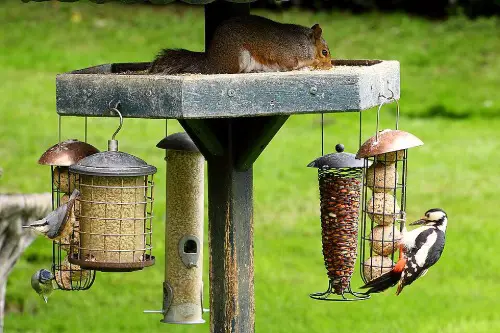
Bird feeders seem like a charming addition to any yard, attracting colorful feathered friends for your morning coffee view. But in states like Colorado and Alaska, bird feeders can become an unintentional dinner bell for bears. Local laws often restrict when and how feeders can be used, especially during bear season, to prevent wildlife conflicts. Fines and wildlife violations can result from ignoring these rules.
Even if you’re not in bear country, certain municipalities regulate feeders due to rodent problems. Uneaten seed can attract rats and mice, leading to neighborhood complaints or pest control interventions. It’s always wise to check if your city has ordinances around feeder use or placement. That quaint backyard setup might come with more legal baggage than expected.
2. Rain Barrels
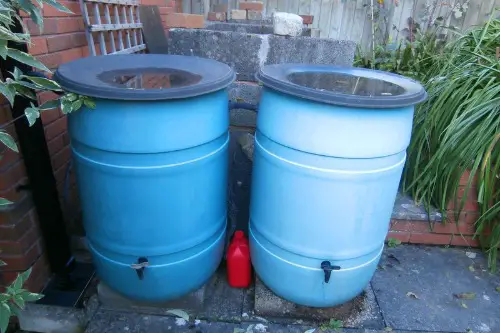
Saving rainwater feels like a no-brainer for eco-conscious gardeners. But in some states, especially in the western U.S., rainwater collection used to be restricted—or still comes with regulations. In Colorado, for example, homeowners are only allowed two rain barrels with a combined capacity of 110 gallons. That’s because of long-standing water rights laws that govern who owns runoff.
Many people don’t realize collecting rainwater can affect downstream users in arid regions. Some states require permits or restrict how collected water is used. Violate the rule, and you could face warnings or fines from your local water board. So before you install a barrel, check if you’re legally allowed to keep that water to yourself.
3. Hammocks on Trees
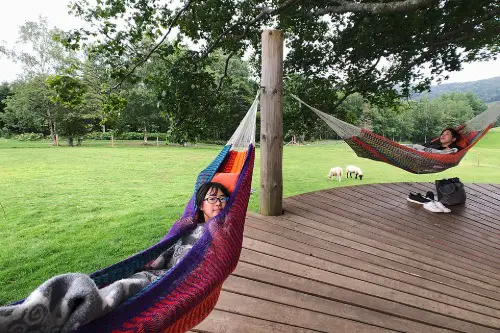
A backyard hammock looks perfectly innocent—until it starts damaging your tree. Many cities have ordinances that protect public trees, and using straps or ropes on them can be illegal. In urban areas, especially, tying anything to a street or park tree could result in fines. Even on private land, HOAs may have rules against attaching items that can harm root systems or bark.
Beyond legality, repeated use of straps can damage the cambium layer, which is crucial for nutrient transport. This weakens the tree over time and may make it more vulnerable to disease. It’s worth checking your local regulations and using tree-friendly suspension systems. That way, you can nap without breaking the law—or a limb.
4. Fire Pits
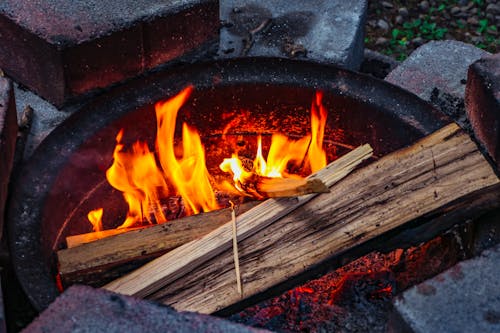
Nothing beats a crackling fire on a cool night, but fire pits are tightly regulated in many towns and counties. In drought-prone areas like California or Arizona, open flames may be banned outright during fire season. Even when legal, fire pits might need to be a certain distance from structures or trees. Violating these rules can lead to fines—or worse, liability for a wildfire.
Some neighborhoods or cities also prohibit wood-burning due to air quality concerns. You might be required to use gas-fueled pits or install spark arresters. It’s not just about safety—it’s also about environmental compliance. Always check for burn bans or permitting requirements before lighting up.
5. Decorative Ponds
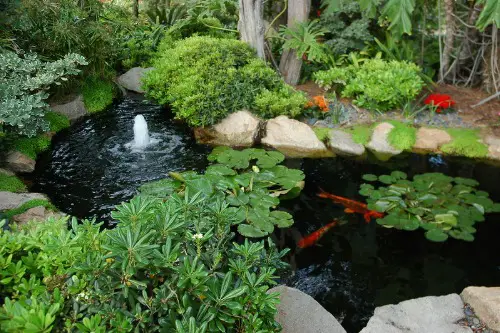
Installing a koi pond might seem like a peaceful backyard upgrade, but it can have serious consequences if not done by the book. In places like Florida, decorative ponds can attract invasive species like cane toads or serve as breeding grounds for mosquitoes. There are often state or local regulations regarding pond depth, fencing, and mosquito control measures. Non-compliance could even affect your home insurance or violate zoning codes.
Additionally, many HOAs and municipalities require permits for water features above a certain size. Stormwater drainage concerns and liability issues (especially if children could access it) make this a legal gray zone. It’s not always a simple matter of digging a hole and adding water. Better to check in with local ordinances before taking the plunge.
6. Lawn Ornaments and Statues

Gnomes, fountains, and whimsical sculptures add personality to a garden—but some cities and HOAs set limits on these kinds of décor. In some residential zones, especially those with strict HOAs, visible lawn ornaments must conform to height, material, or theme guidelines. What feels like creative expression to you might be considered visual clutter to a neighbor. Fines or required removals aren’t uncommon.
Certain states or cities may even regulate ornaments due to safety or accessibility concerns, particularly if they’re close to sidewalks or utility boxes. Blocking utility access can land you in trouble with city maintenance. Ornaments near public walkways could also pose tripping hazards, especially in ADA-compliant zones. Before you install that seven-foot flamingo, read the fine print.
7. Compost Bins
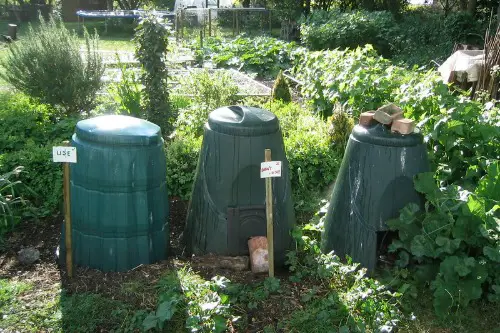
Composting is great for reducing waste and building rich soil—but not everyone’s on board with backyard piles. In some places, compost bins must be rodent-proof, located a certain distance from property lines, or screened from view. Cities like New York and Chicago have specific rules to prevent odor, pests, and health code violations. Failing to follow them could get your compost flagged by health inspectors.
Also, not all composting materials are permitted in residential bins—meat, dairy, and pet waste are often banned. If you’re in an area with curbside organics pickup, using your own system might even be restricted. A “green” project can turn into a gray area pretty fast. Knowing the local rules keeps your compost pile legal and neighbor-friendly.
8. Motion-Sensor Lights
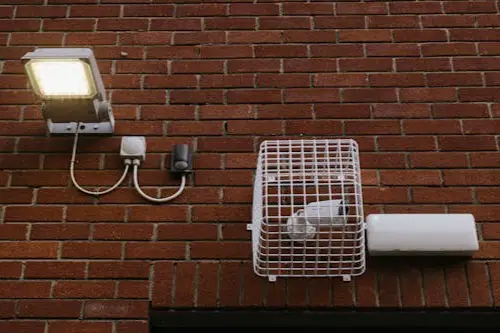
Outdoor lighting helps with security, but too-bright or poorly positioned motion lights can violate “light pollution” or nuisance ordinances. Many municipalities limit lumen levels, fixture direction, or hours of operation—especially in residential zones. If your lights shine into a neighbor’s window or disrupt local wildlife, you might be asked to remove or adjust them. Some cities enforce this through building codes or local noise-and-nuisance boards.
Even without formal complaints, wildlife preservation laws can come into play. Bright lights can interfere with the habits of nocturnal animals or migratory birds. Some areas even have “dark sky” regulations aimed at reducing ambient nighttime brightness. It’s not just a matter of brightness—it’s also about being a good neighbor (to humans and critters alike).
9. Trampolines

Trampolines might look like innocent backyard fun, but they’re often heavily regulated or outright banned by HOAs or insurance policies. In many states, having an unsecured trampoline can void your homeowner’s insurance or raise your liability premiums. Some cities require safety enclosures, anchoring systems, or even fencing around them. And if a neighbor’s child gets hurt while bouncing? You could be legally responsible.
Beyond liability, zoning laws might regulate the structure’s size, location, or visibility. Noise and safety complaints from neighbors are common. Even if you’re within your rights, violating local codes can mean forced removal or fines. Before bouncing into this decision, double-check the legal landing.
10. Outdoor Speakers
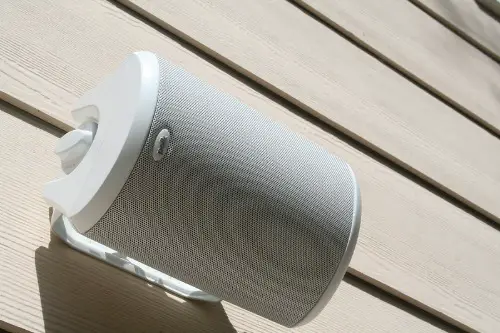
Everyone loves a good summer playlist, but outdoor speakers are a common flashpoint in noise ordinance complaints. Most cities have decibel limits for residential zones and enforce quiet hours—often starting around 10 PM. Persistent violations can result in warnings, fines, or even misdemeanor charges in extreme cases. Even daytime use can be a problem if it’s loud enough to disturb neighbors.
Smart speakers and wireless setups have made it easier than ever to bring sound outdoors. But just because you can doesn’t mean you should—at least not without checking your local sound ordinances. HOAs may have their own limits or ban outdoor speakers entirely. It’s best to enjoy the music at a volume that keeps the peace (and keeps the cops away).
This post 10 Outdoor Items That Feel Harmless—Until You Know the Local Laws was first published on Greenhouse Black.
